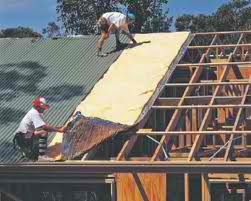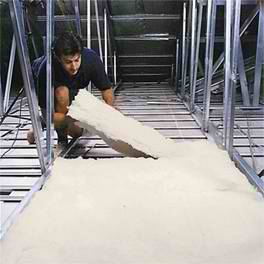Thermal Insulation Solutions
Thermal insulation use in residential and commercial buildings is growing exponentially throughout the world and it’s easy to understand why.
With the ever increasing cost of energy it makes sense to take any measures possible to reduce the heating and cooling costs within your home or office, but the benefits of thermal insulation go beyond the cost savings.
Not only can correctly installed thermal insulation significantly reduce your energy bills, by up to 60% in some cases, but it will also greatly improve the day to day comfort of your home. Being naturally cooler in summer and warmer in winter will create a much more enjoyable living experience for you and your family for years to come.
The cost of installing thermal home insulation is fairly low in comparison to other methods for reducing energy bills and will quickly be recovered through the savings made in a comparatively short time. Plus, installation is quick and unobtrusive, and unlike some other methods for cutting your energy costs, will generally last a lifetime.
There are a number of products available to insulate the different areas within your home, however, your ability to take advantage of them will depend on wether you are building a new home or insulating and existing home.
Thermal Home Insulation for new homes:
There is no better time to consider creating a comfortable and energy efficient living environment within your home than at the time of construction.
To comply with the Building Code of Australia, a basic level of home insulation is often included at the time of construction. However, in many cases this is the bare minimum and often falls a long way short of creating the optimal conditions for long term comfort and energy efficiency.
The cost of home insulation as a percentage of the total building cost for a new home is minimal, however the comfort benefits of a well insulated home will last a lifetime and the energy savings will see the insulation pay for itself many, many times over. Sadly, insulation is often overlooked and the full benefits missed out on.
At the time of construction there are many areas that should be considered with the goal of creating the most comfortable an economical living space, including house design, window treatments, orientation of the home, flooring, shading, construction material and insulation just to mention a few.
At time of construction thermal home insulation can be installed into the following areas:
Under rooves

Ceiling Cavity

External Walls

Underfloor

Because the majority of heat is lost through the ceiling of your home, normally it would be the ceiling cavity that gets the most attention with regards to home insulation,. However, it is worth noting that under roof, external walls and under floor insulation is on really practical to install at time of construction, so if budget is a factor it is better to insulate these areas first and then add insulation in the ceiling cavity at a later date.
Thermal Home Insulation for existing homes:
If you are experiencing hot living conditions in summer or cold conditions in winter, and the associated high energy bills, then home insulation could be the simple answer.
Prolonged use of air conditioners in summer or heaters in winter leads to high electricity bills, but there are ways to help reduce these large energy costs and increase your comfort at the same time. Installing thermal home insulation is the most significant action you can take toward creating a more economical and comfortable home environment.
Because the factors that can influence heat gain and loss in a home can be complex, widow tinting , ventilation, roof colour, flooring and shading to mention a few, we always recommend having an experienced insulation professional attend your home to advise. However, by correctly installing thermal home insulation and coupling this with shading devices over windows, it’s possible to reduce direct sunlight heat and minimise your need for air conditioning in summer. Similarly in winter, a properly insulated home will need less heating as the warm air remains contained within the home.
If you already have home insulation installed in your ceiling and are still experiencing extreme conditions within your home, it is advisable to ensure the insulation has not deteriorated over time or that the R-value is correct for the climate zone you live in, as it may be advantageous to top up your current home insulation level, or replace it with a higher ‘R’ Value.
Whilst exterior wall insulation is also highly beneficial, for existing homes this generally requires the removal of plasterboard and is not economically practical in most cases, however, for homes that are built suspended from the ground, underfloor insulation is very practical and can be highly beneficial.
Review our recommendations on Underfloor Insulation here.
